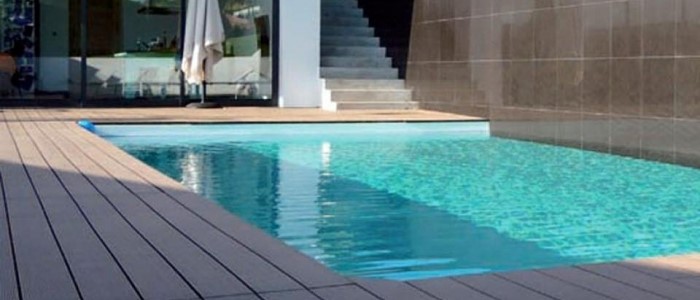Plastic decking vs composite
As an alternative to timber, composite and plastic products have made great strides in the decking industry over the past decade.
In this guide, we explore the benefits of Wood Plastic Composite (WPC) and how it compares against its fully-plastic sidekick.
WPC is manufactured from a combination of recycled plastics and hardwood waste. It’s an immensely versatile material, which combines the traditional appearance of timber with the durability of an engineered composite.
Unlike WPC, plastic decking is 100% recyclable as it contains no wood fibres or fillers. It’s highly stain-resistant, doesn’t require finishing and won’t ever crack, warp, or splinter – but it does have its downfalls. It’s vulnerable to expand and contract in certain climates, which can loosen joints and make the decks unstable.
Additionally, in hot, sunny areas, plastic decks can get very hot on the soles of the feet and actually radiate heat, making them uncomfortable.
Another downside comes down to the installation process. Because it’s designed as part of an overall system, plastic decking must be installed with strict adherence to manufacturer’s instructions. This may require purchasing special fasteners, fascia boards and trim pieces.
WPC decking will not split, splinter or rot and is extremely dimensionally stable. It requires little or no maintenance and has a high resistance against environmental impacts such as fungal or mould attack. An occasional scrubbing with warm, soapy water will remove most dirt and grime. A little diluted bleach can kill mould and mildew that can grow in damp, dark areas of a deck.
It’s innovative subsurface fixing systems means no nails or screws need to go through the deck itself, creating a smart, uniform and barefoot friendly deck.
Dura Deck is a key example of WPC, which is the first of its kind to be 100% FSC Certified. Other advantages include:
- Made from up to 87% recycled materials
- Requires no staining or painting
- Low Maintenance – needs only basic cleaning to maintain
- Dimensionally stable – will not warp or rot
- UV Certified to ISO 4892-2 so will survive the harshest of climates
- Barefoot friendly – sub surface easy fixing
For more information on Dura Deck, click here.
And you?
Being an imitation to wood, it is no equal substitute for real timber. However, due to a growing variety of colours, styles and textures now available, timber imitation products are becoming more and more comparable.
If you’ve got any questions on WPC, be sure to check out our blog on the five benefits of composite decking or get in touch today.
And if you want to share your thoughts on the increasingly popular timber alternative products, join in the debate on Twitter.



